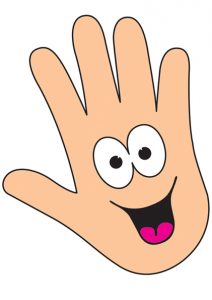
Many parents and teachers know the benefits of using hand motions with rhyme and songs to teach children. Educators know it helps children learn on multiple levels. It teaches them many different skills. This combination of movement and sound engages a child’s sense of sound, vision, and motion.
Different Ways of Learning
Children learn the same activity in different ways. The book by John Gardner,”Multiple Intelligences”, talks about ways that children and individuals learn. He is a psychologist that has identified eight ways that children and adults learn and process information.
The eight different ways are linguistic, logic-mathematical, musical, spatial, bodily, interpersonal, and naturalistic. Finger play bridges the gap between these different learning styles. Finger play and nursery rhymes create a bond between parents, caregivers, teachers and the children they teach. Often this type of play involves music, rhyme, motion, coordination, verbal skills, and more.
Bridges A Gap Between Movement and Words
Rhyme and motion helps children learn symbols and sounds. They learn to associate letters with forming words. Children learn that letters and symbols represent sounds. Finger rhymes help children to learn to use letters more quickly. The next step for older toddlers is reading. This activity bridges the gap. It has been found that children with dyslexia that learn rhyme and finger play have less trouble readings.
Finger play and rhyme teaches children many skills counting, body awareness, memory, letters, sound, and words. These activities develops muscle coordination, language skills, body awareness, rhythmic skills, preparation for playing a musical instrument, self esteem, and auditory skills.
Benefits of Nursery Rhymes and Hand Movements
Rhymes are repetitive, and teach children words and units of sound that make up words. Songs like “Daddy Finger” combines song and movement. The origin of this song is unknown but, it is a popular nursery rhyme that talks about different members of the family using fingers. Daddy is the thumb or first finger on the hand. It combines song and hand motion.
Rhymes and songs stand out with children. It helps the child learn that letters and words translate to sound. They learn to recognize syllables in words too. Nursery rhymes teach kids the patience of listening to something from beginning to end. They pave the way for reading longer stories.
When movement and rhyme are combined this stimulates the brain. The child is more likely to remember both the movements and the words to the rhyme or song. Nursery rhymes activities are often group activities that build social skills.
Finger Play and Motionon
Finger play engages children and helps them develop attention. Finger play build their auditory memory as they learn the words. Rhyming and moving create pictures in their brains. Finger play helps them remember the words or sequence of a rhyme or song. This is exercise for their hands. It teaches hand and eye coordination. Children learn impulse control and speaking, listening, and comprehension.